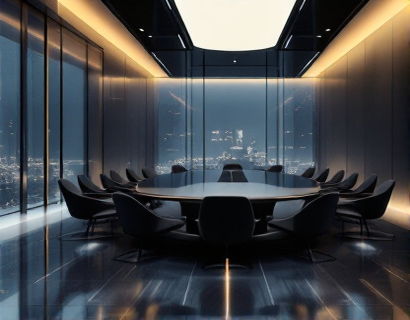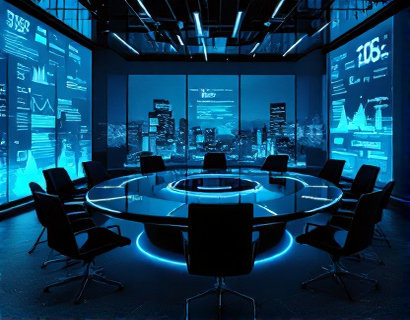Custom Business Card Creation for E-commerce Brands: A Guide to Professional Branding and Premium Designs
In the digital age, where online presence is crucial, the physical touchpoint of business cards remains an essential element of professional branding. For e-commerce brands, custom business cards serve as a tangible representation of their online identity, offering a unique opportunity to make a lasting impression in person. This guide delves into the importance of custom business card creation, focusing on how freelancers, entrepreneurs, and corporate leaders can leverage premium designs and professional branding to elevate their image and networking impact.
Understanding the Role of Business Cards in Branding
Business cards are more than just a piece of paper with contact information. They are a microcosm of a brand's identity, encapsulating its values, aesthetics, and professionalism. For e-commerce brands, which often lack a physical storefront, business cards become a critical tool for establishing credibility and memorability. A well-designed card can spark curiosity, initiate conversations, and leave a lasting impression that translates into potential business opportunities.
Key Elements of a Professional Business Card
A professional business card should include essential information such as the brand name, logo, contact details, and a unique value proposition. However, the design elements are equally important. The choice of colors, typography, and imagery should align with the brand's overall identity and resonate with its target audience. For e-commerce brands, the card should reflect the sophistication and reliability associated with online shopping, while also conveying the personal touch that sets it apart from mass-market competitors.
Customization Options for E-commerce Brands
Custom business cards offer unparalleled flexibility, allowing brands to tailor every aspect of the design to their specific needs. This customization can include unique shapes, textures, and finishes that set the card apart from standard offerings. For instance, a luxury e-commerce brand might opt for a thick, matte finish with embossed logos, while a tech startup could choose a sleek, minimalist design with a glossy surface. These distinctive features not only enhance the card's visual appeal but also reinforce the brand's message and values.
Benefits of Premium Designs
Premium business card designs go beyond basic functionality to create a memorable and impactful experience. High-quality materials and advanced printing techniques ensure that the card feels as good as it looks. For e-commerce brands, investing in premium designs can signal a commitment to excellence and attention to detail, which are highly valued by discerning customers. Moreover, a premium card can differentiate a brand in a crowded market, making it more likely to be kept and referenced by potential clients.
Material Choices
The choice of material significantly impacts the feel and perceived value of a business card. Options range from standard cardstock to more luxurious materials like linen, cotton, and even wood. Each material offers a unique tactile experience that can align with the brand's personality. For example, a brand focused on sustainability might choose recycled paper or bamboo, while a high-end fashion brand could opt for thick, textured cardstock that exudes luxury.
Printing Techniques
Advanced printing techniques such as foil stamping, embossing, and debossing add depth and dimension to the card, making it more visually striking. Foil stamping, for instance, can highlight the brand logo or key messaging in a metallic finish, drawing immediate attention. Embossing and debossing create raised or sunken textures that add a tactile element, enhancing the card's overall sophistication. These techniques not only elevate the card's appearance but also make it more memorable.
Design Considerations for E-commerce Brands
When designing a custom business card, several key considerations can help ensure that the card effectively represents the brand and resonates with the target audience. First, simplicity is key. A cluttered design can overwhelm the recipient and dilute the brand message. Instead, focus on clean lines, ample white space, and a clear hierarchy of information. The brand logo should be prominently displayed, and the typography should be legible and consistent with the brand's digital presence.
Color Palette
The color palette of the business card should align with the brand's overall color scheme, reinforcing brand recognition. However, it's also an opportunity to introduce subtle variations that add depth and interest. For example, a brand with a primary color of blue might use a darker shade for the card's background and a lighter shade for the text, creating a harmonious yet dynamic look. Color psychology can also play a role, with certain colors evoking specific emotions and associations. Understanding these nuances can help brands choose colors that align with their messaging and resonate with their audience.
Imagery and Graphics
Incorporating imagery and graphics can make the business card more engaging and memorable. For e-commerce brands, this could include a minimalist illustration of a product, a pattern that reflects the brand's aesthetic, or a subtle background texture. The key is to use imagery that complements the text and enhances the overall design without overwhelming it. High-quality, custom graphics can add a professional touch and help the card stand out in a crowded environment.
Ordering Process and Delivery
The ordering process for custom business cards should be seamless and user-friendly, allowing brands to focus on design rather than logistics. A reliable platform should offer a intuitive interface with a wide range of customizable templates, ensuring that users can easily create a card that reflects their brand's unique identity. The platform should also provide clear guidelines and previews to help users make informed decisions.
Template Selection
Starting with a template is a great way to ensure a professional look without requiring extensive design expertise. Templates should be versatile, allowing for easy customization while maintaining a cohesive design language. Brands can browse through various categories such as modern, classic, minimalist, and creative to find the perfect fit. Each template should come with customization options for text, colors, and layouts, enabling users to tailor the design to their specific needs.
Ordering and Delivery
Once the design is finalized, the ordering process should be straightforward. Users should be able to select the quantity, choose the material and printing options, and provide their shipping details with minimal steps. A reliable platform will offer multiple shipping options, including expedited services for urgent orders. Additionally, clear communication about production times and estimated delivery dates helps manage expectations and ensures a smooth experience.
Impact on Networking and Professional Image
The impact of a well-designed business card on networking and professional image cannot be overstated. In face-to-face interactions, the business card is often the first physical representation of a brand that a person encounters. A high-quality, custom card can immediately convey professionalism and attention to detail, setting a positive tone for the conversation. It serves as a conversation starter, providing a natural segue into discussions about the brand's products or services.
Building Trust and Credibility
A well-designed business card can build trust and credibility by presenting the brand in the best possible light. For e-commerce brands, which may not have a physical storefront, the business card becomes an essential tool for establishing authenticity. Including a high-quality logo, clear contact information, and a compelling value proposition can help potential clients feel confident in the brand's capabilities and reliability.
Enhancing Networking Effectiveness
Networking events, industry conferences, and trade shows are prime opportunities for e-commerce brands to connect with potential customers and partners. A custom business card can make these interactions more effective by providing a tangible reminder of the brand. The card's design and quality can spark interest and initiate follow-up conversations, leading to new business opportunities. Moreover, a unique or visually striking card can differentiate the brand from competitors, making it more likely to be remembered and acted upon.
Conclusion
In conclusion, custom business card creation is a vital aspect of professional branding for e-commerce brands. By investing in premium designs and high-quality materials, brands can elevate their image and networking impact. A well-designed card not only reflects the brand's values and aesthetics but also serves as a powerful tool for building trust and credibility. Whether you're a freelancer, entrepreneur, or corporate leader, taking the time to create a custom business card can pay dividends in the competitive e-commerce landscape.











































